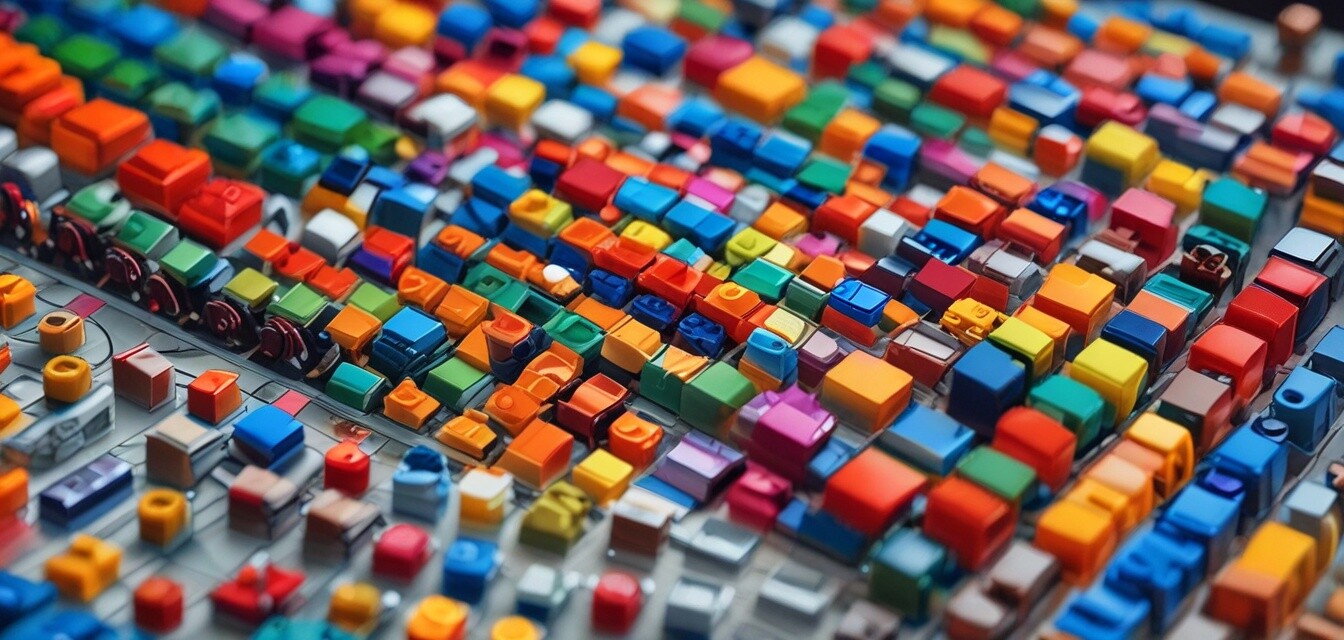
Fun Lego-themed science projects for teens
Key Takeaways
- Engage teens in hands-on projects using Lego bricks to explore scientific concepts.
- Encourage creativity and innovation through building and experimentation.
- Develop problem-solving skills with real-world applications.
- Foster a love for science and technology in a fun and interactive way.
Introducing science to teenagers can often feel daunting, but what if you could turn it into an exciting adventure? Using Lego sets, teens can create engaging science projects that challenge their critical thinking and creativity. In this article, we'll explore some fun and educational Lego-themed science projects that will inspire innovation and experimentation!
Why use Lego for science projects?
Lego sets are versatile, easy to manipulate, and enjoyable to work with. They allow teens to visualize complex scientific principles through hands-on activities that can be adjusted and customized. Here are some key benefits of using Lego for science projects:
- Accessibility: Most households have a collection of Lego bricks, making it an easily accessible resource.
- Engagement: Building with Lego fosters interest in STEM (science, technology, engineering, and mathematics) subjects.
- Collaboration: Teens can work together to build and troubleshoot, promoting teamwork.
- Creativity: Encourages creative expression while applying scientific concepts.
Exciting Lego-themed science projects
1. Solar-Powered Lego Car
Build a car powered by solar energy using Lego bricks and a small solar panel. This project allows teens to learn about renewable energy sources and renewable technologies.
- Gather materials: Lego bricks, a small solar panel, and wheels.
- Design and build the car frame using Lego.
- Attach the solar panel to the top of the car.
- Test and modify the design to improve speed.
2. Lego Bridge Engineering Challenge
Explore the principles of engineering by constructing different types of bridges using Lego bricks. This project provides insight into structural integrity and load distribution.
| Bridge Type | Challenge | Experimental Variable |
|---|---|---|
| Beam Bridge | Build a bridge that spans 1 meter using only straight bricks. | Change the number of support beams. |
| Arch Bridge | Design an arch bridge with minimal materials. | Vary the arch shape to see which supports the most weight. |
| Suspension Bridge | Create a suspension bridge that can hold a small weight. | Test different lengths of cables. |
3. Lego Catapult Experiment
Construct a catapult with Lego and see how various design modifications affect the distance a projectile can travel. This project introduces concepts of physics including force and distance.
- Build a basic catapult using Lego bricks.
- Test the initial launch distance of a small projectile.
- Modify the angle and size of the catapult arm and measure improvements in distance.
4. Weather Station with Lego Sensors
Create a simple weather station that tracks temperature and humidity using Lego bricks and basic electronic components. This project combines programming and building skills.
- Use a temperature sensor and a humidity sensor.
- Build the weather station using Lego bricks.
- Program a small microcontroller to relay information from the sensors.
- Display the data collected onto an LED screen.
Getting started with Lego science projects
To effectively start any Lego science project, consider the following steps:
Tips for Success
- Gather all necessary materials before starting your project.
- Follow the scientific method: make observations, construct a hypothesis, conduct experiments, and analyze results.
- Document your process and findings in a science journal.
- Don’t be afraid to try different approaches and experiment with your builds.
Share Your Creations!
Encourage teens to share their completed projects with friends and family or even through social media platforms. Building a community of young innovators can spark interest and ideas for further projects. Don't forget to check out more DIY projects and ideas on our website!
Pros
- Engages teenagers through hands-on learning.
- Encourages innovative thinking and creativity.
- Fosters teamwork and communication skills.
- Can be tailored to different scientific concepts.
Cons
- Potential for frustration if projects become too complicated.
- Requires some materials which might not be easily available.
Conclusion
By utilizing Lego sets for science projects, teens can enjoy a unique learning experience that fuels their curiosity and passion for science. These engaging activities not only provide educational benefits but also allow for personal expression and creativity. Dive into your next project with Lego and let the exploration begin!